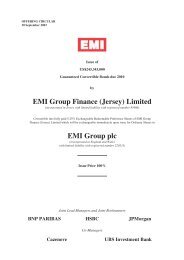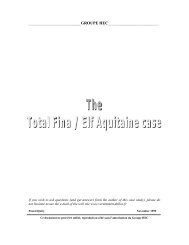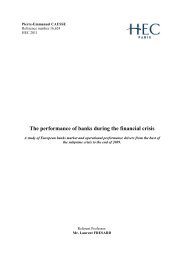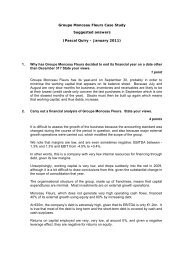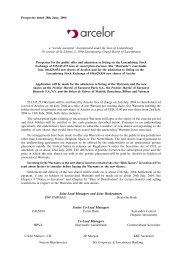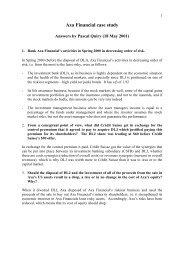Thesis_gd_final_vers.. - Vernimmen
Thesis_gd_final_vers.. - Vernimmen
Thesis_gd_final_vers.. - Vernimmen
Create successful ePaper yourself
Turn your PDF publications into a flip-book with our unique Google optimized e-Paper software.
not have been profitable if they had to be financed with a capital requirement of 8%. Thus, the<br />
consolidation of conduits for regulatory matters would have discouraged banks to set them up in<br />
the first place. Regulatory arbitrage is not limited to by-passing regulatory capital requirements by<br />
playing on the difference between on and off-balance sheet. Referring to Acharya and Schnabl<br />
(2009), Nadauld and Sherlund explain that between 2004 and 2007 the growth in risk-weighted<br />
assets was much lower than the growth in total assets, which means that banks have been<br />
investing in safer assets than those which they were holding during this period. When we know<br />
that banks kept as much as 30% of the AAA-rated tranche of all real estate related ABS and<br />
CDOs on their balance sheet, it is easy to understand that banks used securitization as a way to<br />
free-up additional regulatory capital, or let’s say to take on more risk for an equal level o regulatory<br />
capital. This form of regulatory arbitrage is based on the rating arbitrage presented above to<br />
decrease regulatory capital requirements. Exposure to assets which would have require higher<br />
capital levels given their risk are actually hold through the AAA-rated tranche of the ABS, which<br />
requires less regulatory capital. This regulatory arbitrage can be viewed as based on the use of<br />
asymmetric information by banks on the true riskiness of their assets against regulators.<br />
d) The development of financial markets and derivatives<br />
The limitations and restrictions imposed from early on on banks, limiting their size and scope and<br />
thus their ability to support and finance companies which have been getting larger over time, has<br />
fostered the development of broad and active capital markets which are a major source of<br />
financing for the economy. In his book U.S bank deregulation in historical perspective, Calomiris<br />
(200) underlines that a key characteristic of the American uni<strong>vers</strong>al banking model is the growing<br />
integration between commercial banks and financial markets. According to him, leveraging and<br />
using the comparative advantage of US financial markets will be one of the dri<strong>vers</strong> of success for<br />
US commercial banks in the first decades of the twenty-first century. If it is true that US financial<br />
markets have been more developed and active than in other countries, they also experienced a<br />
tremendous growth thanks to technological changes which have allowed to reduce transaction<br />
costs, to compute data and disperse information instantly. Financial innovation reinforced and was<br />
reinforced by technological change. As a consequence, financial markets scope is increasing at a<br />
very high pace thanks to the creation of new products such as complex derivatives. The latest<br />
example is doubtlessly the extraordinary growth of credit derivatives and especially credit default<br />
swaps. The notional amount of credit default swaps stood at $698 billion at the end of June 2001;<br />
- 22 -



